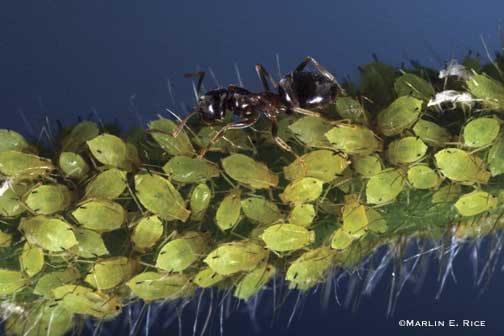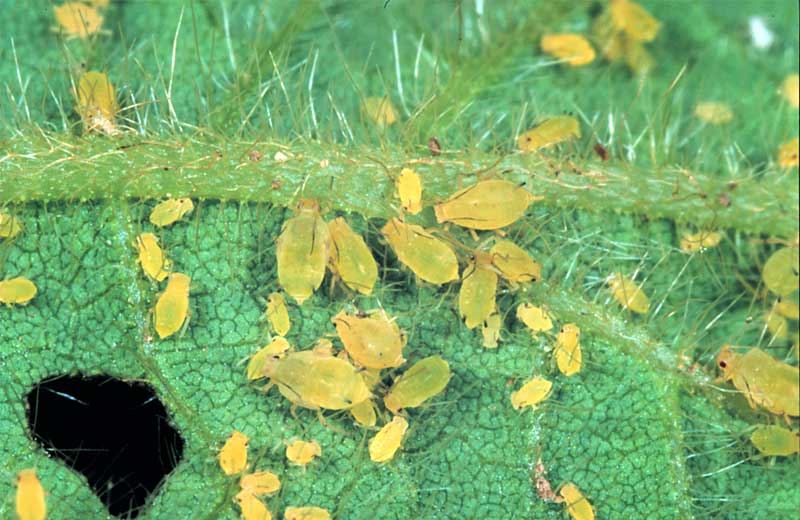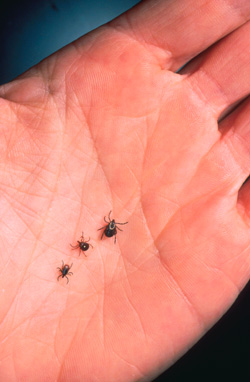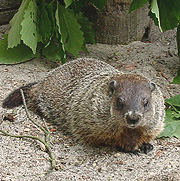
8:58 p.m. - 2006-06-17
More suck for your buck. (new pics 3/23/08)
Hello, my friends!
How is your late late spring going? I hope you've all been camping, traveling, walking, running, biking, swimming and even streaking through your neighborhoods, just to celebrate Wendell's favorite time of year!
In fact, you might see me streaking sometime; it was a tradition for graduating LU seniors that I missed, and greatly regret!
Anyway, as promised, my schedule has sucked with my new full-time job. But I needs the money, yo. I would like to share some of this suckiness with y'all, in the form of two sucking insects! Read on for writeups on aphids and wood ticks!
Unfortunately I got to witness some aphids recently, infiltrating the K and JN residence. J was complaining about the tiny creatures coming through their screen door and dirtying up the floor. I positively identified them as aphids, (not to brag)!
Aphids are our vegan "sucker" of the day. Also known as "plant lice" (gross) aphids are members of Suborder Homoptera, Family Aphididae. They enjoy sucking the juices out of plants, especially the tender new growth. If your plant appears wilted, isn't growing properly, or looks faded in color, aphids could be the culprit. Also, keep an eye out for ant infestations, as some species of ants will "herd" aphids, collecting their sweet excrement, honeydew.
Yes, aphids poop clear and sweet, just like me! These sticky honeydew droplets also attract bees and wasps, and encourage a type of fungal growth called sooty molds.
These bugs are usually green or black, but can also be found in shades of brown, red and purple. Even the same species can appear in different colors through their life cycle. Aphids sport two "tails" on their rear end. These are tubes called cornicles, which the insects use to secrete defensive scents. Hee hee!
Aphids are true baby-makers. There are several types of reproduction cycles in the aphid family, which are variations of the following. In the spring, aphid eggs, which have been glued to plants all winter, hatch, and special nymphs emerge, called stem mothers. These wingless aphids then suck, grow, and molt, and after a week or two are ready to create eggs parthenogenically, that is, without a male. These eggs are matured internally, and continue the cycle. Some nymphs grow wings, and then travel to infest other plants, (or the N household!) In the fall, aphids sense the coming change of seasons, and the stem mothers will produce both boy and girl eggs. These nymphs mature and mate, and again glue the eggs to the plant stem to overwinter.
Whew! If you find these eensy little breeders in your garden, there are several ways to eradicate them. The easiest is by maintaining healthy plants, and planting aphid resistant varieties near the aphid-prone. Some resistant plants include rosemary, marigold, allium, garlic, chives, asters and lavender. Secondly, you can periodically wash away aphids from infested plants with a strong jet of water. Ladybugs and their larvae are a natural enemy of aphids. "Soft" insecticides, such as oils and soaps, are very effective against aphids, since the insects are soft bodied and easily harmed externally. These types of insecticides are also less dangerous for the "good" bugs. The same is true of insecticides that are injected into the ground (instead of sprayed or dusted onto the plant) as the chemicals will infiltrate the aphids through the plant juices.
Keep your eyes out for aphids! They're cool to watch (on someone else's plant!)
Our next sucker is all carnivore, all the time. This makes them creepier, as well as more dangerous to humans.
What we usually identify as a "wood tick" is more accurately called an American dog tick, or Dermacentor variabilis. A tinier version is the deer tick, which spreads Lyme Disease. More on that later.
Ticks are well designed for sucking. They are tiny, about 1/8 inch long, and flat. As they bite, ticks excrete an anesthetic which prevents the host from feeling the bite.
Of course, in order to find a meal, these arachnoids must hitch a ride. This process is perfected in the three step life cycle of the tick. First, the tick must either smell or sense the heat of a passing animal. Once hatched, the six-legged larva will crawl up a blade of grass or plant in order to latch onto a small animal. These include fuzzies such as a mouse, vole, squirrel, chipmunk, shrew, muskrat or rabbit. After about four days of sucking, the tiny larva jumps off its host, molts, and becomes an eight-legged nymph. Now the baby tick will hop on another small creature like the ones listed above, or a larger one like a raccoon or opposum. After about six days of feasting, the nymph jumps off the animal and rests for a longer period, growing and molting.
In the "Ew, gross" dept.: Even if a nymph or larva can't find a mammalian host, it can survive for up to two years without eating.
Now the larger adult will climb higher for a really big host, like a dog, fox, deer, marmot, skunk or a human. At this stage, both male and female ticks will find each other, and while the female feeds, the male mates with her and dies.
Moment of silence.
After gorging herself, the female tick releases herself from the host and proceeds to lay over 4,000 eggs in the grass, and the cycle starts again!
To prevent yourself from assisting in the tick life cycle, awareness is important. Wear light-colored clothing if you're going to be hiking in long grasses or brush, and check yourself frequently for crawling ticks. (They like to fasten on in warm areas like the groin, head and armpit!) Secondly, check your pets in the warm months and utilize tick collars. Bug repellants are important, as well as keeping your yard trimmed. If you do find a sucking tick on your person, don't yank it out! Its head might stick inside your skin and could cause an infection. Instead gently ease out the parasite with a tweezers, or suffocate it (this is what we do in our family) with a wad of vaseline. As the tick dies it will release itself from your skin. The following picture features, from left to right, a dog tick, deer tick, and lone star tick.
If you see a target shaped marking around a former deer tick bite, you might have Lyme Disease, which is an inflammatory disorder of the nervous system and joints. Seek treatment immediately, and if you're a woodsperson, it might be good to get the Lyme vaccine. Rocky Mountain Fever is a more dangerous infection caused by Rickettsia organisms inside the tick. Two to five days after you are bitten, you will experience fever, chills, severe back pain, and a rash that starts on your hands and feet and spreads. RMF can cause death, but again is easily treated with immediate medical attention.
Yikes! Serrrious stuff.
To finish on a fuzzier note, this morning I saw a mama and a BABY MARMOT! Of course, a dream come true. The pair were in the field by the UPS headquarters, a meadow where geese and skunks have been spotted throughout the year.
Ok, final huggies, and a shout out to all the people who helped us with wedding invitations today! SH, PG, CS, AB, R, J&JS and CN!
Wendell!
|





